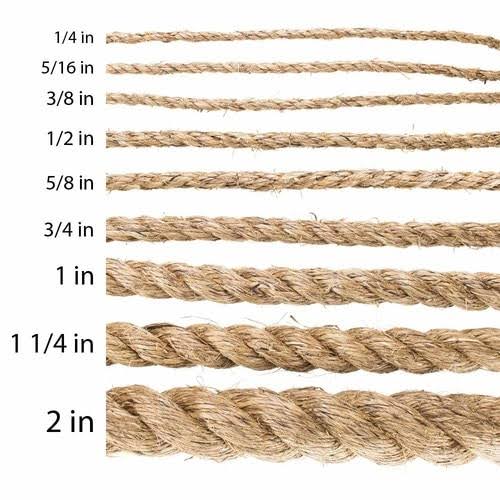Ever wondered, "Just how long is a length of rope?" It's a deceptively simple question with a surprisingly complex answer. Unlike a standardized unit like a meter or a foot, a "length" of rope isn't fixed. Its measurement depends entirely on the context, the manufacturer, and the intended use. This seemingly straightforward query opens up a fascinating exploration of measurement, history, and the practical applications of this ubiquitous tool.
Rope, a tool as old as civilization itself, has played a crucial role in human development. From hauling massive stones for ancient structures to securing ships in stormy seas, the adaptable nature of rope has allowed us to build, explore, and connect in countless ways. The question of rope length, therefore, isn't just about measurement; it's about understanding the evolution and impact of this essential invention.
The absence of a standard "length of rope" reflects the diverse purposes it serves. A climbing rope, for example, might be measured in meters or feet, reflecting the climber's need for precise measurements. A coil of rope sold at a hardware store might be measured in feet, yards, or even meters, depending on local customs and manufacturing standards. Nautical rope, on the other hand, often uses fathoms, a unit specifically designed for maritime measurements. This variation highlights the importance of understanding context when discussing rope dimensions.
Historically, rope lengths were often defined by the materials and methods used in their creation. Early ropes made from natural fibers like hemp or jute were limited by the length of the fibers themselves. The process of twisting and combining these fibers into stronger, longer ropes led to the development of various measurement systems. Understanding the historical context of rope making gives us a deeper appreciation for the complexities of determining rope size.
Determining the appropriate rope length for a particular task is crucial for safety and efficiency. Using a rope that's too short can lead to dangerous situations, while using an excessively long rope can be cumbersome and inefficient. So, while there’s no single answer to the question “how long is a length of rope,” knowing how to measure and select the right rope for a given application is essential.
There are different types of rope, including twisted, braided, and plaited, each with varying strength and flexibility. Understanding these characteristics is crucial for selecting the right rope for a specific task. For example, a dynamic climbing rope is designed to stretch, absorbing the impact of a fall, while a static rope, used for anchoring or hauling, provides minimal stretch.
One major challenge in dealing with rope is its tendency to fray and unravel. Proper storage and maintenance are crucial for extending the lifespan of a rope. Another issue is knot tying. Different knots have varying strengths and applications. Learning to tie the correct knot for a specific situation is essential for safety and effectiveness.
Frequently Asked Questions:
1. What are the common units used for measuring rope? Feet, meters, yards, and fathoms.
2. How do I determine the correct rope length for my needs? Consider the intended application and consult manufacturer guidelines.
3. What are the different types of rope available? Twisted, braided, plaited, kernmantle, etc.
4. How do I care for my rope to ensure its longevity? Store it in a dry place, avoid exposure to chemicals, and inspect it regularly for damage.
5. What are the essential knots I should learn? Figure eight, bowline, clove hitch, and prusik knot.
6. How do I measure the breaking strength of a rope? Refer to manufacturer specifications or have it tested professionally.
7. What factors can affect the lifespan of a rope? Exposure to sunlight, moisture, chemicals, and abrasion.
8. Where can I buy quality rope? Hardware stores, marine supply stores, and online retailers.
Tips and Tricks:
Always inspect your rope before use.
Learn basic knot-tying techniques.
Store your rope properly to prevent damage.
In conclusion, the question "how long is a length of rope" serves as a gateway to a deeper understanding of this fundamental tool. While there’s no single answer, exploring the historical context, diverse applications, and practical challenges related to rope length highlights its enduring importance. By understanding the factors that determine rope dimensions, learning proper handling techniques, and appreciating the evolution of this ubiquitous material, we can truly harness the power and versatility of rope in all its forms. So, the next time you encounter a coil of rope, take a moment to consider its journey and the countless ways it continues to shape our world. Its length, after all, is just the beginning of its story.
Length of rope stock image Image of background long - Trees By Bike
Rope Diameter Size Chart - Trees By Bike
how long is a length of rope - Trees By Bike
how long is a length of rope - Trees By Bike
how long is a length of rope - Trees By Bike
32 Feet Length Strong Multifunctional Soft 100 Nylon Rope Natural - Trees By Bike
Proper Jump Rope Length How Long Should Your Jump Rope be And How to - Trees By Bike
how long is a length of rope - Trees By Bike
Whats the Right Jump Rope Length For Beginners - Trees By Bike
567 Long Length Rope Stock Photos - Trees By Bike
580 Long Length Rope Stock Photos - Trees By Bike
Use a rigging rope for top rope anchors - Trees By Bike
What Determines Rope Strength - Trees By Bike
The Best Rope Length For Your Climbing Style - Trees By Bike
How Long Should A Jump Rope Be For Your Height at Chris Reed blog - Trees By Bike














